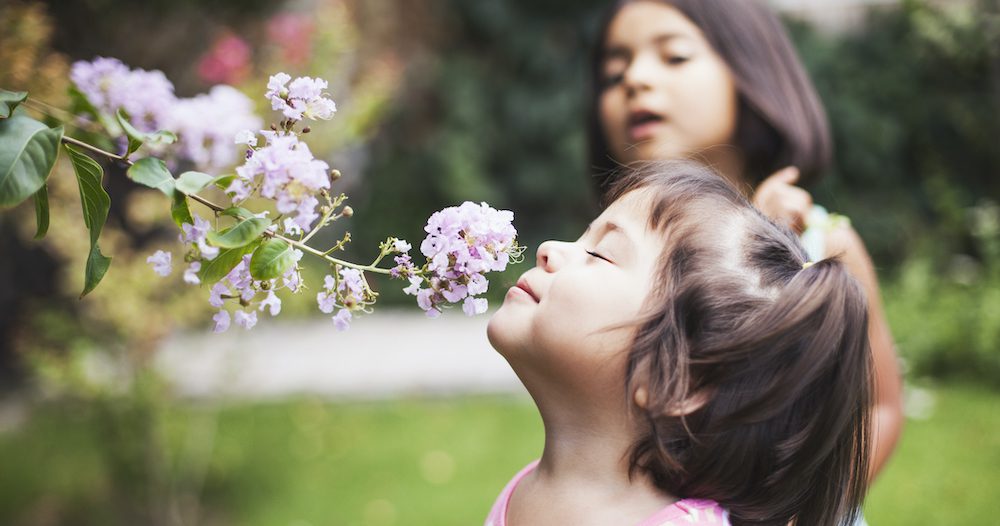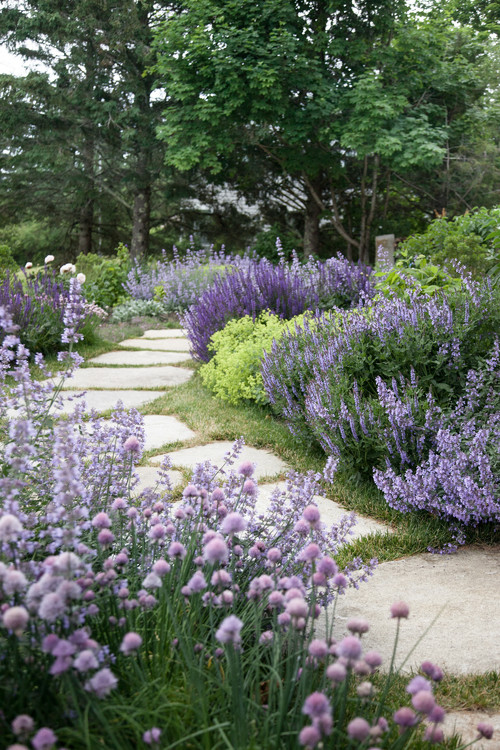
Laura Olivas / Getty Images
Most homeowners plant flowers and shrubs with colorful blooms and variegated leaves to enhance the view from their porch and improve curb appeal. But what if you could also add fragrance to the mix?
Enter the scent garden.
In the same way that you light a lemon-scented candle in the kitchen to mask pet odors and last night’s fish dinner, a scent garden is literally flower beds and bushes that are planted with fragrance in mind. It results in a lawn, patio, and walkways that are infused with pleasant scents all summer long.
“You’re actually missing out if you don’t choose plants for their fragrance as it adds an extra dimension to your garden and makes it more appealing,” says Susan Brandt, the green thumb at Blooming Secrets.
The impact of scent is distinctive and closely rooted to memories—and a garden without fragrance will seem sterile and somehow not quite right, adds Isara Ongwiseth, lead designer at FormLA Landscaping.
Gardening is a balm—especially now during these fraught times of the novel coronavirus—so up your green thumb game by adding fragrant flowers, herbs, and shrubs to your property. Here’s more about sowing a scent garden, including which flora to put in and where to place it for maximum olfactory impact.
Scent gardens by zone
Luckily for the home garden, any climate can accommodate a scent garden.
“There are a few scented plants that are tropical, but outside of those you can definitely find options that work in your cooler climate,” notes Brandt.
And take note of your local temperatures when selecting annuals and perennials for their scent.
“Some flowers are perennial in warmer climates and annual in colder ones, including freesia and tuberose,” she adds.
Where to plant a scent garden
Photo by JMS Design Associates
Focus your scent garden efforts in the outdoor areas where you spend the most time, say the pros. For example, a row of rosemary plants at the edge of your driveway is a delicious scent to take in on your way to check the mailbox. Or put in swaths of creeping thyme or lemon verbena along a patio walkway or among stone pavers so that fragrance is released with every step you take.
“You can plant fragrant mint or lemongrass in containers near your front door or patio to repel mosquitoes from entering the home, and it’s wonderful to have scented blooms near a window so that when you open it the scent wafts inside,” says Brandt.
The best-smelling flowers
Roses top the list when it comes to fragrant flowers—everyone loves them, says Brandt. But you can also consider scented geraniums, jasmine, stargazer lilies, gardenias, hyacinth, and clematis vines.
The best-smelling herbs
Photo by Matthew Cunningham Landscape Design LLC
Lavender is a classic flowering herb in scent gardens, though you can also skew toward the kitchen and plant edible ones for their delicious smells (think oregano, basil, and mint).
Ongwiseth recommends several sage varieties such as Cleveland sage; hummingbird sage, which attracts the bird; and the earthy smelling white sage.
“And wooly blue curls is a great swap for rosemary, since the blooms smell like a blueberry muffin and leave your hands smelling like they just left a bakery,” he adds.
Best trees and bushes for scent gardens
Lilacs are very popular in a scent garden, with Ongwiseth endorsing the California lilac whose smell is distinctive from the East Coast variety. And this lilac can play two roles as it can be planted as an evergreen privacy screen with no dormancy period.
Other lovely scent options in this category include peonies, viburnum, daphne, cherry trees, apple trees, and andromeda.
Succession planting in a scent garden
The fragrance of peonies is intoxicating to be sure, but don’t be tempted to sow a yard full of them. The reason? Peonies last only a week or so in June in most climates before fading, which means your garden will be unscented for the remainder of the season.
Instead, use the method of succession planting in a scent garden to ensure that fresh fragrances will flourish in sequence. For example, try lilacs in the spring and then follow them with peonies and bearded iris. Roses and lilies bloom next, in the heat of the summer, and then continue with fragrant angel coneflower in the early fall.
And don’t forget to deadhead your scent garden, says Ongwiseth, as doing so leads to more fresh blooms—and stronger fragrance.
The post The One Thing Even Gorgeous Gardens Might Be Missing appeared first on Real Estate News & Insights | realtor.com®.






No comments:
Post a Comment